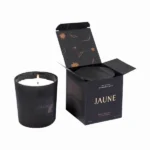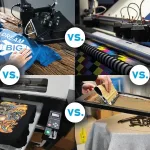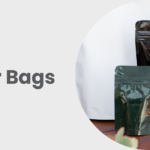Packaging is the most crucial aspect of your retail business. Your brand’s entire reputation depends upon it. There are several approaches to packaging that you may use. A carton sealing tape is one of the necessities you must own, regardless of whether you are a retailer, a supplier, or relocating. Packing and transporting items is difficult, but you must consider the sealing tape you’ll employ if you want to accomplish it. This detailed reference regarding carton sealing tape will be of great use to you.
Why do You Use Carton Sealing Tape?
Box packaging and box sealing often include the use of carton sealing tapes. They are available in various lengths, widths, thicknesses, colors, and adhesive techniques. Carton packaging tapes can be used for corrugated boxes since they are used in various settings. The box use may now retain the stability of the product and contain its contents safely due to the assistance of finding the perfect tape.
The sealing tape is the same as the packaging box should be best. Just think of having a very luxurious packaging box without a seal. It would be completely useless! Therefore, solid and durable sealing is a must. Here comes the perfect solution for you! Carton sealing tape. Yes, this tape can aid you the best in the packaging regard. However, it would help if you focused on finding the best adhesive.
Secondly, a significant factor is that different packaging boxes require different sealings. For instance, the packaging boxes of Kraft will need tape different from the sealings of corrugated cardboard boxes. All you need to do is extensive research on the types and categories of sealings that suit different packaging.
Conventional Packaging Terms
Businesses that use packaging tapes must use the best tape to seal their boxes and cartons. Remember that choosing the wrong tape may cost businesses money and time and even impede productivity. For this reason, common terminology is employed to define your ideal carton packaging tapes. Browse the list below.
- Tensile Strength
This calculates the force necessary to pull something until it rips and breaks.
- Backing Material
This is the part of the tape that the adhesive is put on. Cloth, paper, vinyl, and polypropylene are the tape backing materials that are most frequently used.
- Elongation
This relates to tensile strength since it depends on how far a tape can stretch before breaking. Tensile strength is often measured in pounds, whereas elongation is typically measured in percentages.
- Size of Core
Since the core size determines the interior roll diameter of a packaging tape, it is also crucial.
- Length
It’s also essential to provide the precise length of the tape as it is on a roll. Rolls of 55 or 110 yards are frequently used for tapes. However, machine length rolls can range from 1000 to 2000 yards.
- Width
Another factor is the tape’s width on the roll, typically specified in inches or millimeters. The width of sealing tapes can range from two to three inches.
- Thickness
This roughly represents the desired thickness of your wrapping tape. For instance, heavy-duty tapes are thicker than three mils, whereas economy carton tapes may be less than 1.5 mils thick.
Common Types of Packaging Tapes
Pressure-sensitive and water-activated carton sealing tapes are typically the two types of tapes most frequently used to seal cartons. Let’s have a look at the details:
1. Pressure-Sensitive Carton Sealing Tape
Pressure-sensitive packaging tape is the most common packaging tape used for sealing cartons. These tapes typically consist of a plastic film with a pressure-sensitive adhesive. When pressure is applied, the tape sticks to a surface and comes off the roll already sticky.
Pressure-sensitive adhesive (PSA) tapes can be applied manually or by machine. A tape dispenser or packing tape gun is used with hand tapes. Machine tapes, on the other hand, are applied using a tape machine that seals the top and bottom of the carton box while pulling the box through on a belt.
2. Water-activated Paper Carton Sealing Tape
Like gummed paper tape, water-activated paper packaging is a tamper-proof tape (TEP) constructed from entirely sustainable, 100% sustainable sources with no disposal concerns. An environmentally friendly alternative to PSA plastic tape, water-activated paper sealing tape offers improved security, better presentation, and cost savings.
In contrast to PSA tapes, water-activated tapes operate differently. These tapes feature a gummed adhesive and a dry-to-the-touch paper backing that becomes sticky when wet. The tape becomes a permanent component of the corrugated or liner board carton when they becomes moist and develops a strong connection with it. The recipient must cut right through the adhesive tape when water-activated paper tape opens a box.
How to Pick the Best Tape for Carton Packaging
Choosing the correct carton packaging tape may seem crucial to your entire packaging system. But in reality, it isn’t since adding fillers to your box to keep the contents safe and secure is just as crucial to your secondary packaging plan. You should be aware that choosing the wrong carton sealing tape might impact the packaging’s contents and the entire structure. The following factors should be taken into account while choosing the best carton sealing tape:
- Grade
Carton sealing tapes have many grade ranges, indicating different film degrees and adhesive thicknesses. These grades are available in a variety of holding and tensile strengths. Therefore, while deciding what grade kind of tape to choose, consider the carton’s size, weight, and environment during manufacture and shipment. The quality of wrapping tape you choose should rise as any of these factors.
- Context
Never disregard the manufacturing and storage settings when selecting a tape. The quality of the tape seal can be affected by elements like temperature and atmospheric conditions (dust and humidity).
- Surface
What kind of carton material you wish to seal is something else to consider. Consider several corrugated cartons, including recyclable, thick or double-wall, printed, or waxed cartons. Each one has unique benefits for the distribution network and shortcomings in terms of tape performance.
- Quality
The quality of the carton wrapping tape should be the last consideration when making a choice. High-quality sealing tapes provide the endurance needed to endure the distribution network, are quick to unwind, and firmly adhere to the corrugated surface.
Conclusion
To avoid wasting time, money, and effort, you must understand which type of tape you should use for your packing requirements. When carton packing fails, the adhesive tape is typically at fault.
However, other important considerations include the mix of the tape and carton, the application technique, and the environmental conditions. Some of these circumstances might be beyond your control, but keeping them in mind the next time you select a carton sealing tape could result in better, more secure packing.







